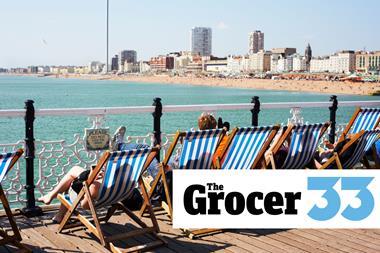
Kantar’s announcement that Aldi now holds the fourth largest value share of UK grocery, ahead of Morrisons, has attracted a lot of attention. And not only because the long-standing term ‘big four’ has been made redundant.
How far does this story have to run? Are we approaching ‘peak discounter’ or are we likely to see more share steal for discounters? As things stand, I think there is more to come. And here are three reasons.
First, many shoppers continue to believe the prices in Aldi and Lidl are cheaper than those elsewhere. Tesco and Sainsbury’s have reduced the gap with price matches, and Asda is redoubling efforts on low price.
But Aldi and Lidl benefit from many years of consistent delivery on price. Even if Tesco and Sainsbury’s matched on every line, it would take a long time for shoppers to be convinced. Reputations, like brands, are not built over weeks or months. It can take years to change perceptions. Aldi and Lidl have momentum on price that will be hard to slow.
Second, quality perception. Aldi and Lidl are not just a price game. Their fast stock turn often means abundant fresh produce with long life. Lidl and now some Aldi stores have meat and fish kept super-fresh in refrigerated cabinets.
Bakery is strong, especially in Lidl. The use of designs and names that are reminiscent of big brands may help perception of own label quality, too. For example, at a time when butter prices have been much commented on, good value butter is important. Tesco and Sainsbury’s offer 500g own label spreadable butter at £2.50. Aldi’s equivalent is called Nordpak and comes at £2.19. I think most shoppers would agree that Aldi’s product most resembles Lurpak, and maybe this is helpful in connoting quality.
Third – and crucially – Aldi and Lidl will continue to open a lot of new stores. Sometimes these are in totally new areas, offering purely incremental sales. Sometimes they are nearer to existing Aldi or Lidl stores, which have been operating over capacity.
Like-for-like sales in those existing stores may reduce, but at the end of the day, customers will be happier. Either way, when a new discounter store opens, large stores nearby will feel it. Already selling less volume than 10 years ago, often looking a bit tired and gappy, large stores could do without this extra headache.
So, all things being equal, I think there is more growth to come for Aldi and Lidl. That said, this assumes that they continue to operate with discipline and effectiveness. They are not infallible. For example, in Aldi last week, I found the store entrance packed with craft beer, including large individual cans at £1.69 and smaller cans at £1.49. That didn’t seem like relevant value for most shoppers in these straitened times.
If that is one small mistake, the likes of Tesco, Sainsbury’s and Asda will be keenly looking for others. All great runs in retail come to an end but I don’t think that is happening here yet.



















No comments yet